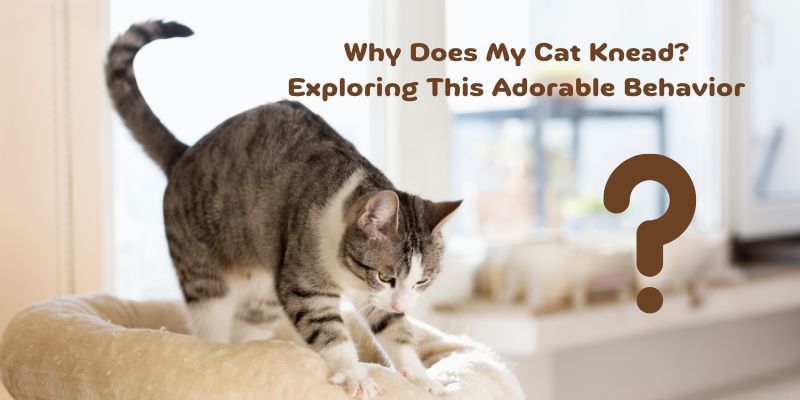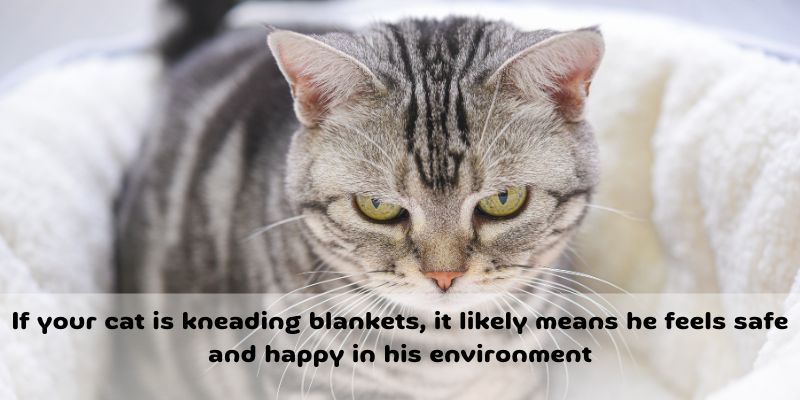Have you ever seen your cat systematically push their paws against a soft surface, just like cooks do for the dough? Like stretching their arms and legs. Are you interested in knowing why they act this way? The reason is apparent in this case, but kneading is quite a familiar and sweet feline behaviour with several causes.

Kneading is a behaviour learned during the first few weeks of the kitten's life. Sucking and kneading, similar to babies, newborn kittens need to massage their mom's belly to encourage more milk production they should be nursing from. In cats, this instinctual action becomes something like a habit. This behaviour is considered a comforting action, thus providing a sense of security to cats.
There are several theories about why adult cats continue to knead:
1. Comfort and Relaxation: The kneading movement is performed by the cats in a relaxed manner and is soothing for cats. Like how humans might rely on something as simple as the security of a blanket or the warmth of a cup of tea, cats find security in kneading.
2. Marking Territory: Cats have Scent glands on their paws and can use kneading to claim a particular space. While you allow your cat to play with or sleep on the blanket, it will most likely claw or scratch you or the blanket, leaving behind Scent glands that mark it as its own.
3. Preparing a Resting Spot: Wild cats may use it to create or pretreat the area where they want to lay down and rest. This behaviour has been inherited, and house cats probably still knead when preparing to sleep.
4. Displaying Affection: If your cat decides to bite you, it loves you more than anything else. Such behaviour indicates trust in you since kittens feel safe with their mother.
Kneading provides both physical and emotional benefits to cats:
1. Physical Stretching: Kneading assists in stretching the muscles in the kitty's body, especially when awake from a nap or when the animal is inactive.
2. Stress Relief: Pressure in the form of kneading can also be profoundly calming and lessen Stress or anxiety in felines.
Petting or 'kneading' is usually a perfectly normal and innocent activity, but it can sometimes be a little itchy, especially if your cat's claws get involved. Here are some tips for managing kneading:
1. Keep Their Nails Trimmed: Trimming your cat's nails can significantly help reduce the pain you feel each time they use their claws to knead on your lap.
2. Provide a Comfortable Surface: Let your cat use its claws on a soft blanket or cushion, so it won't harm you when it kneads.
3. Positive Reinforcement: Praise your cat with petting or treats to encourage the kneading behaviour only in the right place or object.
It's essential to distinguish kneading from other behaviours that might look similar but have different meanings:
1. Scratching: Scratching is not a grooming behaviour like kneading; it is employed to sharpen the claws and claim territory. It is more forceful and purposeful than grooming and is often accompanied by other signs of discomfort.
2. Pawing: Pawing is usually a form of communication between cats to get you to pay some attention to them. In many cases, it is more than physical touch; it is a way for cats to communicate.

Kneading is a natural response for most individuals. But if your cat seems to be kneading more often, something might be wrong, whether it is Stress or a medical condition. If the reader has observed any changes in the cat's behaviour, they should visit the doctor.
Kneading is only one of the many feline body language signals cats use to communicate with their surroundings. There are many reasons cats exhibit such adorable behaviour, which can help you comprehend the love and faith shown by the cat. Therefore, the next time your cat starts kneading, know that it enjoys the company of its owner and is comfortable.
So, if you have more questions about their behaviour or how to increase the depth of your connection, continue observing and interacting with your pet. If you know what they do, you can foster an environment that makes your cat happy and safe.